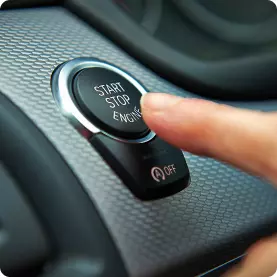Ohio OVI Laws: Your 2025 DUI Charges Guide
Ohio refers to drunk driving offenses as “Operating a Vehicle under the Influence” (OVI), rather than DUI. Under Ohio law, those charged with an OVI face both administrative penalties from the Bureau of Motor Vehicles (BMV) and criminal penalties through the court system. This guide outlines the current laws, consequences, and recovery steps for individuals facing an OVI charge in Ohio.

Getting Started
You face a complex legal process with potential consequences to your driving privileges, finances, and possibly your freedom if you’re convicted of OVI in Ohio. Every OVI case has unique circumstances, so seeking out a qualified attorney who specializes in OVI defense is strongly recommended.
Important Note: While this page gives detailed information about Ohio DUI laws, DUI.org does not offer or provide legal advice. Laws can change, so consult a qualified criminal attorney for personalized guidance.
Definitions to Know
OVI (Operating a Vehicle under the Influence)
Ohio’s legal term for driving under the influence of alcohol or drugs.
SR-22
An insurance certificate of proof of financial responsibility typically required after an OVI conviction to reinstate driving privileges.
IID (Ignition Interlock Device)
A breathalyzer installed in a vehicle that prevents it from starting if alcohol is detected on your breath.
BMV (Bureau of Motor Vehicles)
Ohio’s agency responsible for driver licensing, vehicle registration, and administrative license suspensions.
Ohio Bureau of Motor Vehicles (BMV)
The Ohio Bureau of Motor Vehicles handles administrative license suspensions independent of court proceedings for OVI arrests. The BMV processes license suspensions, restricted license applications, IID oversight, and monitors SR-22 compliance. The bureau also collects reinstatement fees and manages the license reinstatement process after an OVI-related suspension.

Each state enforces DUI laws differently
Steps to Take After OVI Arrest in Ohio
- Hire an OVI Attorney
Legal counsel helps you navigate both the administrative BMV process and criminal court proceedings.
- Address License Suspension
Your driver’s license will be suspended administratively at the time of arrest if you fail or refuse a chemical test.
- Request an Administrative Hearing
You have 30 days from the date of arrest to challenge an administrative license suspension through the BMV.
- Apply for Limited Driving Privileges
If eligible, you can petition the court for limited driving privileges by installing an ignition interlock and meeting other requirements.
- Install an IID
Required for certain offenses and mandatory for high-BAC convictions or repeat offenses.
Explore IIDs - File an SR-22 Certificate or Bond
File proof of financial responsibility with the BMV to reinstate your license after an OVI conviction, if required.
- Complete Substance Abuse Evaluation
You’ll need to undergo an alcohol assessment and complete a recommended treatment program.
- Pay Fines and Fees
Court fines, BMV reinstatement fees, and other costs must be paid before license reinstatement.
- Complete Driver Intervention Program
If you’re convicted of OVI for the first time, you typically must complete a state-approved education program.
- Attend Court Proceedings
Your criminal case will proceed separately from the BMV administrative actions.
- Avoid Further Violations
Whether you’re on probation, using a restricted license, or have just had your license reinstated after an OVI, any new violation can lead to more severe penalties.
OVI Laws in Ohio
What Are the Legal Driving Alcohol Limits in Ohio?
In Ohio, it’s illegal to operate a vehicle while under the influence of alcohol, drugs, or a combination of both. The law establishes specific blood alcohol concentration (BAC) limits based on age and license type. Police may use a breathalyzer during a field sobriety stop to check your breath alcohol concentration (BrAC).
| Driver Category | Legal BAC Limit |
| Drivers over 21 | 0.08% or higher |
| Commercial Drivers | 0.04% or higher |
| Drivers under 21 | 0.02% or higher |
In addition to alcohol limits, Ohio DUI law also prohibits driving with specified concentrations of drugs in your system, including marijuana metabolites, cocaine, heroin, and other controlled substances.
Felony vs Misdemeanor OVI in Ohio
OVI charges in Ohio can be classified as either misdemeanors or felonies depending on several factors:
Misdemeanor OVI
First, second, and third OVI offenses within 10 years are typically classified as misdemeanors. A first offense is generally a first-degree misdemeanor, punishable by up to 180 days in jail.
Felony OVI
A third or fourth OVI offense within 10 years, or a fifth offense within 20 years, becomes a fourth-degree felony. Any OVI that results in serious injury to others (aggravated vehicular assault) or death (aggravated vehicular homicide) is charged as a felony.
Felony OVI convictions carry significantly harsher penalties, including mandatory prison time, longer license suspensions, and possible vehicle forfeiture.
Refusing a Chemical Test Under Ohio OVI Law
Ohio, like all states, applies an implied consent law. When you drive in Ohio, you implicitly agree to submit to chemical testing if arrested for suspected OVI. Refusing a chemical test has serious consequences:
| Offense | Refusal Consequences |
| First Refusal | 1-year license suspension |
| Second Refusal (within 10 years) | 2-year license suspension |
| Third Refusal (within 10 years) | 3-year license suspension |
| Fourth or Subsequent Refusal | 4-year license suspension |
Refusing a test can be used as evidence against you in court, and judges can impose harsher penalties for refusals.
DUI Penalties & Consequences
Penalties for OVI Offenses in Ohio
Ohio has a tiered penalty system for OVI convictions that becomes progressively more severe with each conviction:
First OVI
Jail Time: 3 days to 6 months
Fines: $565-$1,075
License Suspension: 1-3 years
Other Penalties: Possible IID, yellow restricted plates
Second OVI (within 10 years)
Jail Time: 10 days to 6 months
Fines: $715-$1,625
License Suspension: 1-7 years
Other Penalties: Mandatory IID, possible vehicle immobilization
Third OVI (within 10 years)
Jail Time: 30 days to 1 year
Fines: $1040-$2,750
License Suspension: 2-12 years
Other Penalties: Mandatory IID, possible vehicle forfeiture
Fourth/Fifth OVI (within 20 years)
Jail Time: 60 days to 36 months
Fines: $1,540-$10,500
License Suspension: 3 years to life
Other Penalties: Mandatory IID, vehicle forfeiture
For high-tier first offenses (BAC of 0.17% or higher), penalties are enhanced, including a minimum of 6 days in jail instead of 3 days.

DUI plates are used to identify drunk drivers
Aggravating Factors That Increase Ohio OVI Penalties
Several factors can lead to enhanced penalties for an OVI conviction in Ohio:
- High BAC Level: BAC of 0.17% or higher results in doubled minimum jail time and longer license suspension.
- Prior OVI Convictions: Each prior conviction within the lookback period substantially increases penalties.
- Refusing Chemical Testing: Any refusal, including with a prior OVI conviction, can lead to increased penalties.
- Causing Injury or Death: OVI crashes causing serious injury or death result in felony charges.
- Child Passenger in the Vehicle: OVI with a minor under 18 adds child endangerment charges.
- Driving Under OVI Suspension: Operating a vehicle while already suspended for OVI significantly increases penalties.
These aggravating factors can result in mandatory jail time, longer suspensions, higher fines, and additional criminal charges beyond the standard OVI penalties.

Will your OVI conviction land you in jail?
Driving Without a Valid License
Driving while under an OVI suspension in Ohio is a serious offense with severe consequences. If caught driving with a suspended license, you may face:
- Additional criminal charges (first-degree misdemeanor)
- Jail time of up to 180 days
- Additional fines up to $1,000
- Extension of your original suspension period
- Vehicle immobilization or forfeiture for drivers convicted of multiple OVIs
- Ineligibility for limited driving privileges
- Possible felony charges for multiple violations
The courts and law enforcement take these violations very seriously as they demonstrate a disregard for both the law and public safety.
License Suspension
Who Determines if You Can Continue Driving After an OVI
In Ohio, both the BMV and the courts have roles in determining driving privileges after an OVI.
Administrative Suspension (BMV)
If you fail a chemical test (BAC of 0.08% or higher) or refuse testing, the BMV automatically suspends your license. This administrative suspension happens at the time of arrest before any court conviction.
Court-Ordered Suspension
If convicted of OVI in court, the judge will issue a separate court suspension. This suspension often overlaps with the administrative suspension but may be longer depending on prior offenses.
While these are separate processes, they both affect your driving privileges. Limited driving privileges may be granted by the court after a waiting period, typically requiring an IID installation.
How Long Will Your License Be Suspended?
An OVI conviction in Ohio results in a mandatory license suspension. The length depends on prior offenses and circumstances:
| Offense | Suspension Period |
| First OVI | 1 to 3 years |
| Second OVI (within 10 years) | 1 to 7 years |
| Third OVI (within 10 years) | 2 to 12 years |
| Fourth or Fifth OVI (within 20 years) | 3 years to life |
| Sixth OVI or more | Life suspension |
These suspension periods represent the maximum range. The actual suspension period is determined by the judge based on the specifics of your case.
Steps to Reinstate Your License
To reinstate your driver’s license after an OVI suspension in Ohio, you must:
- Serve the full suspension period ordered by the court.
- Pay the reinstatement fee ($315 for OVI suspensions).
- Provide proof of financial responsibility (SR-22) from your insurance agency, if required.
- Complete any required substance use education or treatment programs.
- Install an IID if mandated by the court or BMV.
- Pass a knowledge and vision test if your license has expired for more than two years.
Ohio offers a reinstatement fee amnesty program for drivers who demonstrate financial hardship, potentially reducing or waiving these fees.
Restoring Your Driving Privileges
After an OVI conviction in Ohio, you may be eligible for limited driving privileges during your suspension period. These privileges allow restricted driving for essential purposes while encouraging compliance with court requirements and promoting rehabilitation.
Eligibility for Limited Driving Privileges
Limited driving privileges may be granted by the court after serving a mandatory “hard suspension” period during which no driving is permitted. Eligibility depends on:
- Having served the mandatory waiting period (15 days for first offense, longer for subsequent offenses)
- No prior OVI convictions within specified timeframes for some offenses
- Having valid proof of financial responsibility with an SR-22 insurance filing, if required
- Installation of an IID if required
- Payment of reinstatement fees or enrollment in a payment plan
- Compliance with any court-ordered treatment programs
Those convicted of vehicular homicide or aggravated vehicular homicide while under the influence of alcohol and/or drugs are generally not eligible for limited driving privileges.
How to Apply for Limited Driving Privileges in Ohio
To obtain limited driving privileges in Ohio, follow these steps:
- Wait until your mandatory suspension period has finished
- File a petition with the court that handled your OVI case
- Install an IID on any vehicle you plan to operate (if required)
- Submit an SR-22 insurance filing as proof of financial responsibility, if required
- Provide documentation showing your need for driving privileges (employment verification, medical necessity, etc.)
- Pay applicable filing fees and comply with all court requirements
- Attend any scheduled hearings regarding your petition
If granted, limited privileges typically allow driving only for specific purposes such as work, education, medical appointments, and court-ordered treatment programs.
Ohio Ignition Interlock Device (IID) Requirements
An ignition interlock device prevents a vehicle from starting if alcohol is detected on your breath. In Ohio, IIDs are:
- Mandatory for drivers convicted of repeat OVIs
- Required for a first-time offense with a high BAC (0.17% or higher)
- Often required as a condition of limited driving privileges
- Installed at your expense (approximately $135-$310 for installation plus $65-$125 monthly)
- Required to be calibrated and maintained according to state regulations
- Monitored regularly with data reported to monitoring authorities
- Subject to penalties if tampered with or circumvented
The Ohio Traffic Safety Office oversees the IID program and maintains a list of approved vendors who meet state requirements for installation and monitoring.

Selecting the right ignition interlock provider can make a world of difference.
SR-22 Insurance Requirements
After an OVI conviction in Ohio, you may be required to obtain an SR-22 insurance filing, which is a certificate verifying you have the minimum required liability insurance. Key aspects of the SR-22 requirement include:
- Must be maintained continuously for 3-5 years (depending on offense)
- Filed directly by your insurance company with the Ohio BMV
- Results in higher insurance premiums (often 2-3 times standard rates)
- Lapses in coverage are reported to the BMV and result in license re-suspension
- Cannot be canceled without prior notice to the BMV
- May be required even after your license is reinstated
The SR-22 requirement is separate from any other court-ordered penalties.

Let us help connect you to the right licensed insurance specialist for you.
Substance Abuse Evaluation and Treatment
Ohio requires drivers convicted of OVI to undergo a substance abuse assessment and treatment. This process includes:
- Assessment
A professional evaluation to determine if you have an alcohol or drug problem and what level of intervention is needed.
- Driver Intervention Program (DIP)
If you’re convicted of OVI for the first time you typically must complete a 72-hour residential or non-residential program focusing on education about substance abuse and its effects on driving.
- Treatment Programs
Based on assessment results, you may be required to complete additional treatment ranging from outpatient counseling to inpatient rehabilitation.
- Compliance Monitoring
Courts track completion of required programs, and failure to comply can result in additional penalties or extended license suspension.
The Ohio Mental Health and Addiction Services department maintains a list of approved Driver Intervention Programs throughout the state.
FAQs About OVIs in Ohio
Is a first-time OVI in Ohio a felony?
No, a first-time OVI is typically charged as a first-degree misdemeanor unless there are aggravating circumstances like serious injury or death.
How long will an OVI stay on your driving record in Ohio?
OVI convictions remain on your driving record permanently in Ohio, though they only count toward enhanced penalties for 10 years (or 20 years for certain higher-level offenses).
Can you refuse a breathalyzer test in Ohio?
You can refuse, but Ohio’s implied consent law means automatic license suspension for 1-5 years depending on prior refusals or OVI convictions.
Is it possible to get an OVI expunged in Ohio?
Generally, OVI convictions cannot be expunged or sealed in Ohio, making them permanent records.
Can you drive to work after an OVI conviction?
After serving the mandatory “hard suspension” period, you may petition the court for limited driving privileges that include work travel, often with an IID requirement.
Sources
- Ohio Bureau of Motor Vehicles. (n.d.). Suspension/revocation & administrative license suspension (ALS) – First offense OVI suspension. https://www.bmv.ohio.gov/susp-ad-first-offense.aspx
- Ohio Bureau of Motor Vehicles. (n.d.). Suspension fees and amnesty. https://www.bmv.ohio.gov/susp-fees-amnesty.aspx
- Ohio Department of Mental Health and Addiction Services. (n.d.). Driver intervention program site area: Resources. https://mha.ohio.gov/get-help/treatment-services/driver-intervention-program-sitearea/resources/dip-providers
- Ohio General Assembly. (n.d.). Section 4511.19 – Operating vehicle under the influence of alcohol or drugs – OVI. Ohio Revised Code. https://codes.ohio.gov/ohio-revised-code/section-4511.19
- Ohio Supreme Court. (2021). 2021 OVI sentencing chart. https://www.supremecourt.ohio.gov/docs/Boards/Sentencing/resources/2021OVIchart.pdf
- Ohio Traffic Safety Office. (n.d.). Interlock device forms. https://otso.ohio.gov/programs/interlock-devices/interlock-device-forms
- Thomson Reuters. (n.d.). Ohio OVI laws. FindLaw. https://www.findlaw.com/state/ohio-law/ohio-ovi-laws.html
- National College for DUI Defense, Inc. (n.d.). Ohio DUI/OUI laws. https://www.ncdd.com/ohio-dui-oui-laws
Get support.
What is next? We can help you through the process. Give us a little information and we can support you through the next steps.
All fields are required.